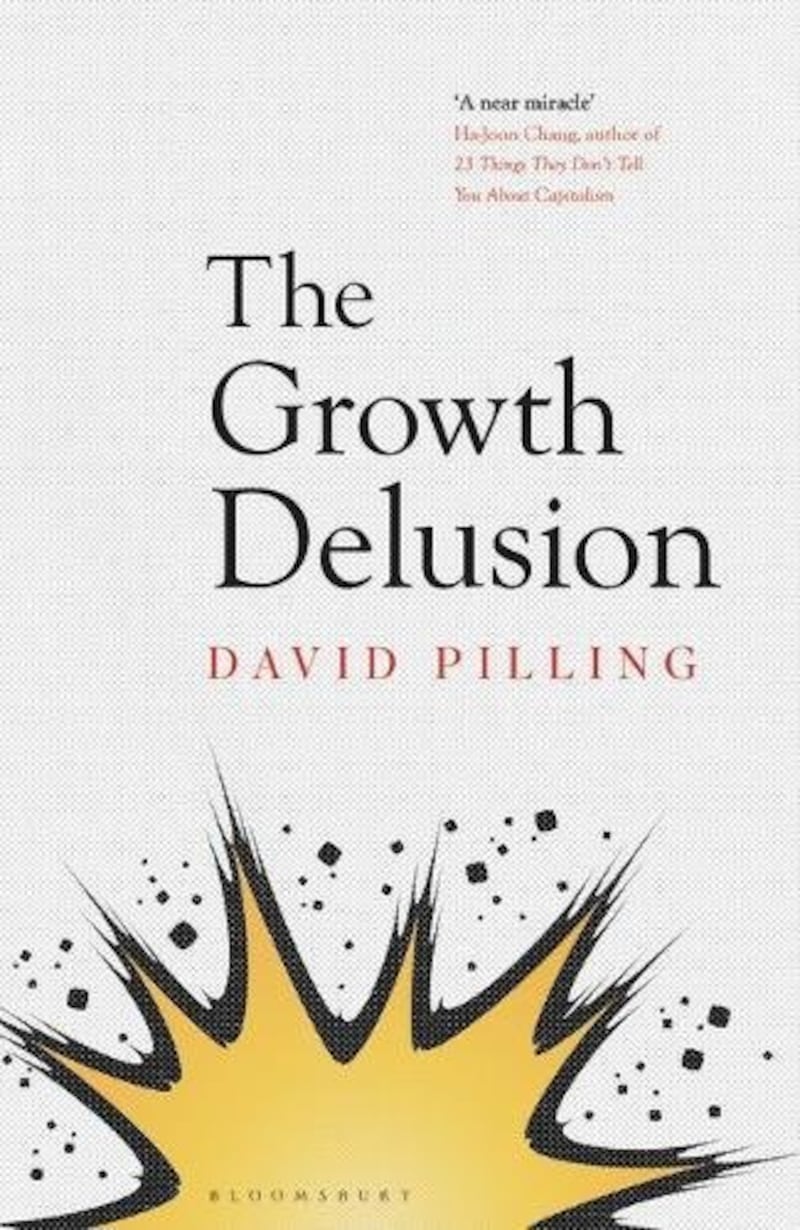I remember the day our national income grew by over a quarter. That day, up to that point, was consumed with managing our public pay policy. The demands for more wages, immediately, were growing more intense by the hour. I was about to commence a series of media interviews when I was informed that our national income had grown 26 per cent.
My narrative of limited resources and competing choices received, to put it mildly, a temporary setback. How could I resist the need for more spending with such explosive growth?
Explanation followed. I argued that Ireland could not make long-term decisions on the basis of economic flows into our State that could be reversed at any point. It was a vivid personal introduction to the challenges of measuring economic growth or decline.

These challenges are the subject of The Growth Delusion by David Pilling. An earlier work by the author, Bending Adversity, is a definitive work on understanding the Japanese economy.
This previous work partially inspired this new book as the author notes that “viewed through the prism of economics, Japan was an abject failure”. This so-called failure was due to low growth rates, a high public debt and falling prices. However, at the same time unemployment was low and living standards were stable.
The inconsistency between the description of economic performance and the perceived reality by citizens is at the centre of this work. Pilling notes “There are many competing explanations for what has caused popular rage in countries that have, judged by conventional measures, never been richer. There is, though, a common thread. People do not see the reality of their lives reflected in the official picture, painted principally by economists.”
A heavy price
This lack of a “common thread” is not just an issue for economists. Too many politicians, myself included, assumed that improving national prospects would immediately dispel the trauma and misery of the economic crisis. Centrist politics has deservedly paid a heavy price for this mistake.
Governments, particularly those that grappled with the global economic crisis, quickly seized improvements in growth rates, public finances and employment as evidence of their successful policies.
However, our fatal assumption was believing that the velocity with which the crash affected living standards would also be maintained during the economic rebound.
Levels of personal and government debt, the accumulated harm to wages across the years of the crisis and the continual impact of technology in the workplace meant this did not happen. If the fall was sudden and severe, the rise was not immediate or perceptible.
However, our very measurement and understanding of economic growth contributes to such difficulties. The marketplace mostly does not put a price on that which can be the most valuable, such as health or a clean environment.
The early signs of this discrepancy are recognised in the origin of the common measurement of growth Gross Domestic Product (GDP).
In a brisk and very accessible review, Pilling points to how measurement has a decisive impact not only on analysis but also, crucially, on policy.
The inventor of this approach was Simon Kuznets who, “rather like Victor Frankenstein, soon saw his creation take on a life – and a direction – of its own”. Kuznets was charged by President Franklin D Roosevelt with creating a set of national accounts.
He argued that defence spending or investment in “anything detrimental to social welfare” should be excluded. That argument was comprehensively lost.
This issue is comprehensively explored. The author notes that the key feature of public services is that the citizen is not charged for their full cost at point of use. Low pricing for these services is therefore a desired outcome.
However, since GDP uses pricing to measure value, the things that can be the most important, such as safe communities and improving public health, are literally undervalued.
Familiar difficulties are explored. The compatibility of wellbeing with growth is examined, with the efforts of Bhutan and the American state of Maryland showing both the opportunities and difficulties involved in this work.
More focus is placed on the broader consequences of planning and economic decisions. Conversely the author asks, “Do we really want the state openly leading us all in the direction of inner bliss?” Bhutan, for example, limits tourist numbers and places minimum spending requirements on those who are allowed to visit.
Environmental disaster
The profound environmental consequences of economic change are also fully interrogated. The impact of smog in Beijing is contrasted with the extraordinary levels of Chinese growth.
This led to efforts to establish green GDP, with the author relating this work to the original challenges of measurement. He notes that “the problem with our obsession with growth is that we do not count the negatives. You cannot call it a trade-off if you only measure one side of the equation.”
To the author’s credit, even familiar concepts are analysed in a fresh and accessible style. For example, the disparity between the treatment of assets and income flows is briskly discussed.
Pilling makes the case for a better balance to “make better decisions about the interplay between stock and flow, between the present and the future”.
To remedy these set of challenges, this book proposes GDP 2.0. This new measurement should take account of population size, income distribution, the deprecation of public assets and other missing variables.
This is the greatest strength, and weakness, of this analysis. Readers looking for a wholesale rejection of growth will be disappointed. The improvements are pragmatic. This sits at odds with the expectation of a “growth delusion”, as the title states.
The next time I am confronted by a sudden change in our national accounts, I will recall the insights of this book. Economic growth really matters. The absence of growth wrecks hopes, its abundance can cause folly but the maintenance of it can be transformative. That is why the measurement of it is so vital.
Paschal Donohoe is Minister for Finance and Public Expenditure and Reform












